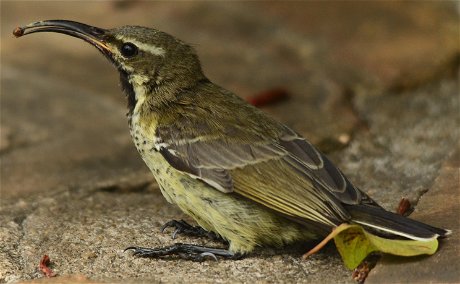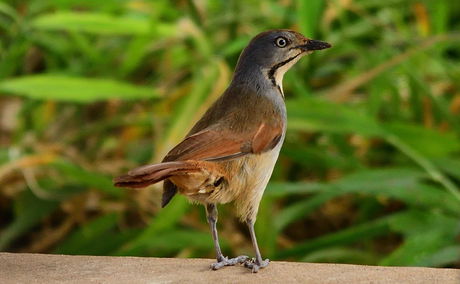We had an unusual surprise one morning, right in front of Kigongo Bay Resort, a flock of greater flamingos, floating on the calm surface of the ocean. A quick rub of the eyes and yes, they were still there. Around 40 of these large bright pink birds were forming a raft in the bay.
Bee-eaters of Kijongo Bay and surrounds
Bee-eaters are a vibrant species of bird that are found in a wide variety of terrains in Africa, Asia, Australia, New Guinea, and Southern Europe.
They are a very colourful bird with slender bodies, long wings and often have long central tail feathers.
The different types of bee-eaters found at Kijongo Bay Resort, are beautiful to observe, as they swoop across the pool, hawk from the bushes or are seen performing their skillful acrobatics as they hunt on the wing.
Bee-eaters Found in Africa
The bee-eaters found in Africa are split into a five different groups,
Green and Cinnamon bee-eaters – of which little bee-eaters, swallow-tailed bee-eaters, & white-throated bee-eaters are found in Kijongo.
Forest bee-eaters – non found around Kijongo Bay
Migrant bee-eaters – of which European bee-eaters, blue-cheeked bee-eaters and Madagascar bee-eaters are found in this area.
Red-throated bee-eaters – white-fronted bee-eaters are part of this group and have been sighted at Kijongo
Carmine bee-eaters – northern carmine bee-eaters are found at Kijongo.
Bee-eater Behaviour
 Little bee-eater
Little bee-eater
As their name suggests, bee-eaters eat a lot of bees, along with wasps and other flying insects. The insects are caught while flying, either by spending extended time on the wing and hunting, or waiting for something to fly past their perch, which is called hawking. Once caught, the bee-eater will return to its perch to rub the insect on a branch to remove the sting, then hit or rub the insect to stun it and remove some of the venom, before eating the insect whole. It has been estimated that some bee-eaters can spot a bee sized insect from over 50m away.
 White throated bee-eater
White throated bee-eater
Carmine bee-eaters use a “mobile” perch for hunting. They will ride on the back of other animals, including bigger ground walking birds, then catch the insects that are disturbed by these animals.
When watching bee-eaters, it is an interesting feature that bee-eaters nearly almost return to the same perch when hunting.
Bee-eaters are diurnal, only active during the day. They are very social birds and are normally found in pairs. On cold mornings, they will sometimes roost in high numbers, so close that that they touch. Most species of bee-eaters are colonial during the breeding season.
 Little bee-eater.
Little bee-eater.
All bee-eaters nest in colonies, digging holes in banks of rivers and cliffs
Little bee-eater

As the name says, this is the smallest bee-eater. This bee-eater is mostly green with a canary yellow throat, with a thin black neck line separating the throat with the buff coloured underparts. A slight blue eye brow and neck strip makes this a very colourful bee-eater.

White-throated bee-eater

The white-throated bee-eater is an intra-African migrant, coming south to the Kijongo area between October and March. This bee-eater breeds in the southern Sahara and makes the migration to avoid the winter in the northern hemisphere.
The white-throated bee-eater is a pale blue green overall colour, with a prominent black and white head and throat pattern. It is a slender bee-eater with the male having a longer tail streamer.

Swallow-tailed bee-eater

A blue-green bee-eater with a long forked blue tail. This bee-eater has a light blue throat strip and a yellow throat.
We sighted this bee-eater in Saadani National Park, so have included it here, as Kijongo Bay Resort surroundings.
Northern carmine bee-eater

A larger bee-eater with a mostly carmine body, other than the greenish blue head and throat, with a black mask. This bee-eater has elongated central tail feathers.

The northern carmine bee-eater is an intra-African migrant, coming south to the Kijongo area between November and March.

Further Reading
Did you know that sunbirds are omnivorous? A sunbirds' diet is made up primarily of nectar, around 95%. They will, however, sometimes eat fruit and arthropods (insects and spiders). Sunbirds need to feed almost continually during the day to meet their high metabolic needs..
When visiting Kijongo Bay Beach Resort, one of the things our guests often comment on, is our incredible dawn chorus. Having well established gardens, with most of our bushes and trees being indigenous, we attract a lot of birds to Kijongo. This dawn chorus can range between subtle to loud, starting just before sunrise, to around a half hour after the sun rises. Bird song is a thing of beauty from the...










Share This Post